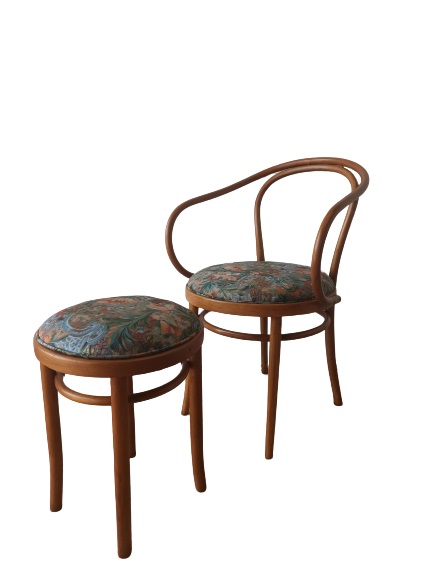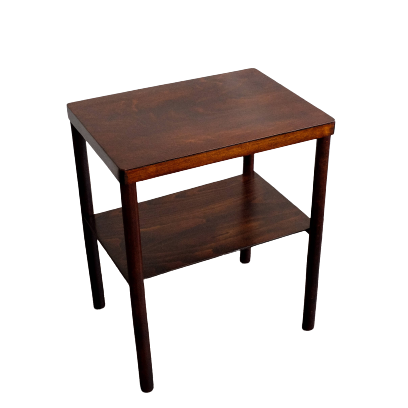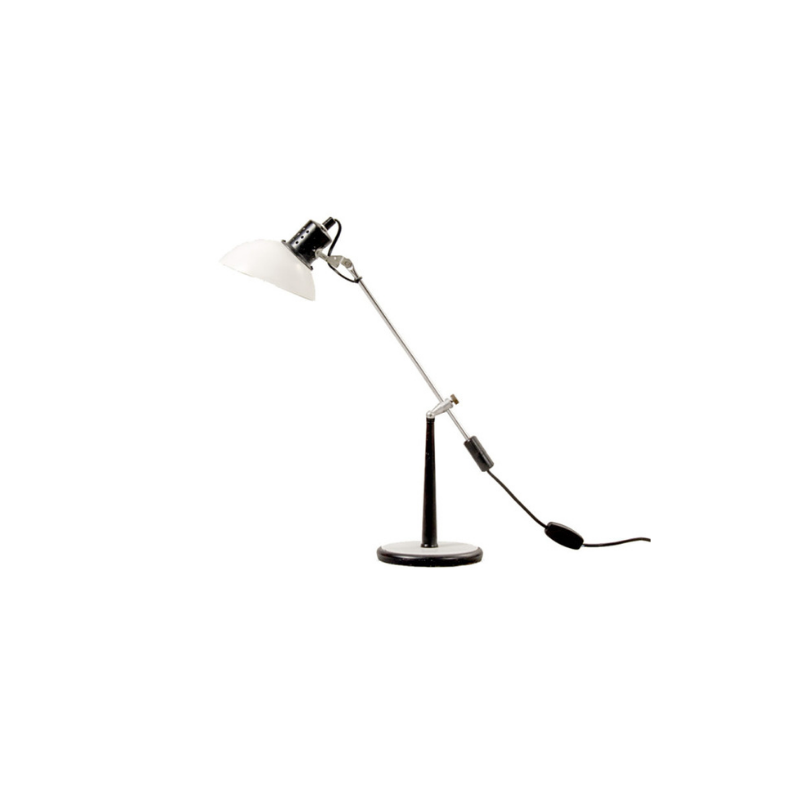Hey folks, I am going to look at this today and was wondering if anyone had any pointers on what to look for in terms of the condition of the cane. From the pics it looks to be in good shape but I have never owned anything that has used cane before so I'm wondering if there are any red flags to keep an eye out for. The cushions are not my style/the original style but at least they are usable until I could have something done. It wouldn't be cheap so I would like to make sure I don't miss anything while I am viewing it.
Photos are from the seller.
Thanks for any help!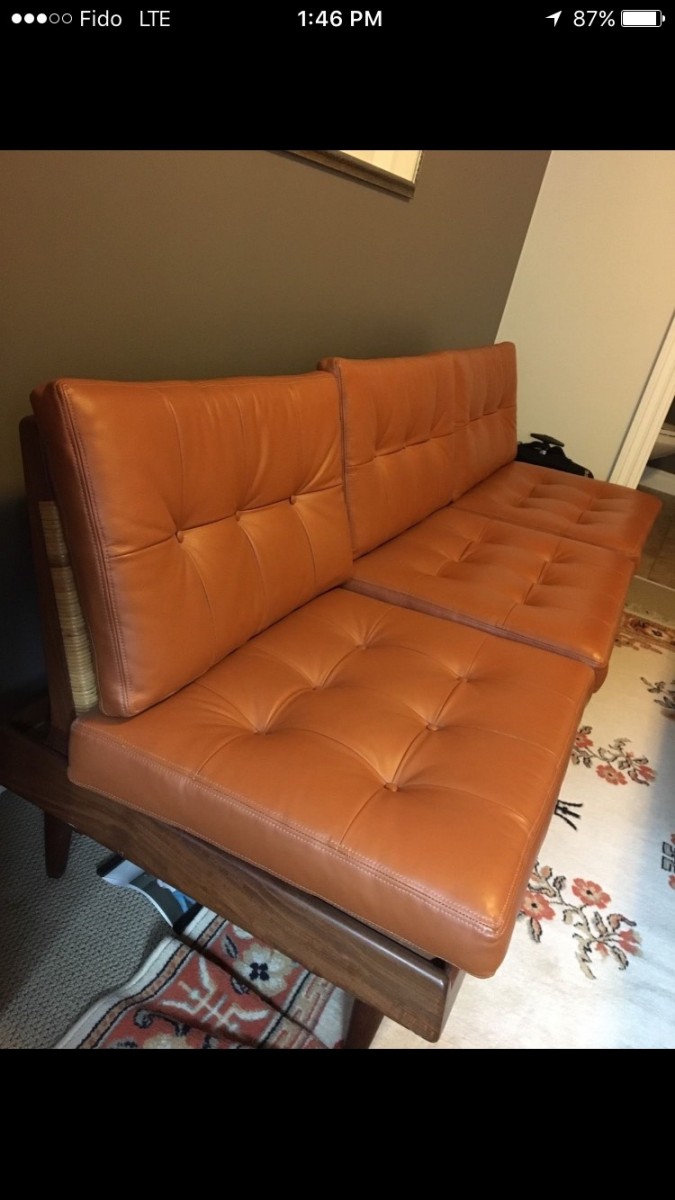
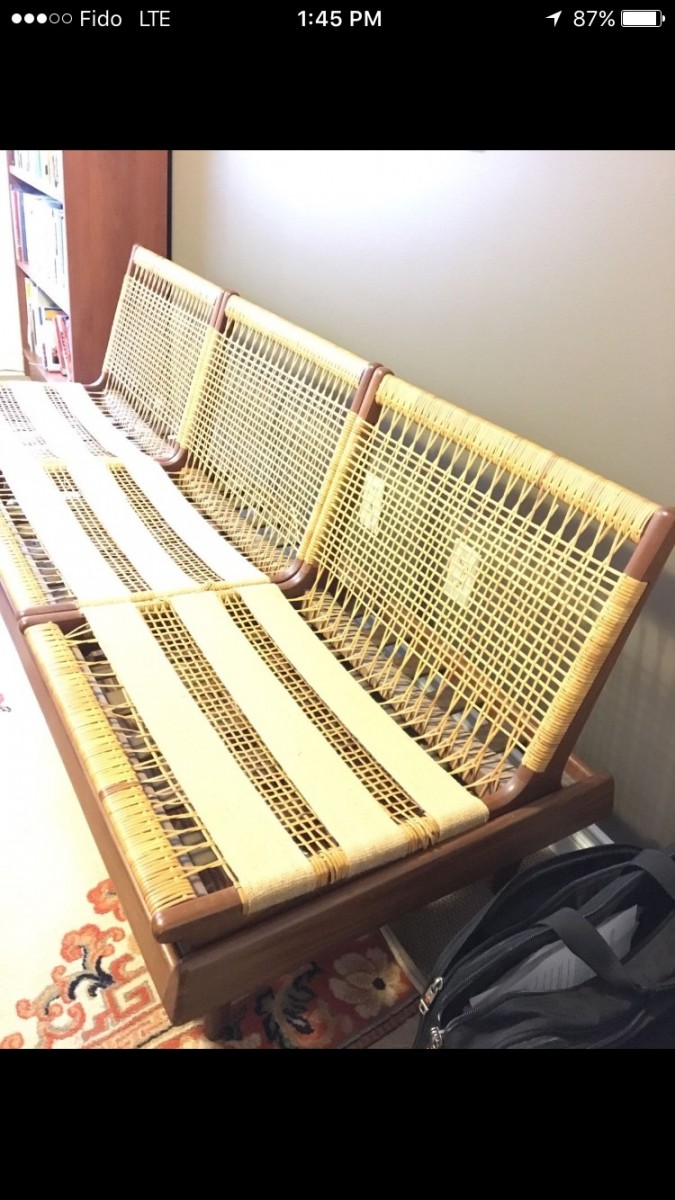 <img class="wpforoimg" src=" http://d1t1u890k7d3ys.cloudfront.net/cdn/farfuture/HfSidRasDkqTKND8aPikUm
<img class="wpforoimg" src=" http://d1t1u890k7d3ys.cloudfront.net/cdn/farfuture/HfSidRasDkqTKND8aPikUm
Two thoughts:
1) those straps (canvas?) at the seat support are not an original design component. Not sure if they were added as a DIY for broken cane, or if they were added after a recaning effort to improve future durability. From the lo-res photos the cane appears to be newer and in pretty good shape.
2) if you need to re-cane, it would be extremely expensive to do retail. But this expense is almost all labor, so you could do it yourself for low cost if you chose to learn that skill.
I can count 10 broken areas in the cane in just these low res photos, and the seat bears more weight so there may be lots more cane problems hiding under those non original white straps.
This is one of those designs where an enormous amount of the value is in the condition of the cane because there are very few people who can do it well, and it will be expensive. There are a number of other Danish designs like this and I think they tend to languish in the storage sheds of dealers because they overestimate the condition and then have no way to sell it that does not lose them money, which they are unwilling to accept.
Neither cdsilva, or I have enough information from the photos to say for certain if the condition of the cane is still good enough, and this is a subjective call until you fall through it, but I am going to guess that the condition is not good enough to be usable as-is.
Finally take a look at how they attached those new straps. You can't hide anything with this design. If they made a mess of the wood with staples, that will be a mess you will always be able to see.
It's always nice when the people you meet selling furniture are super nice! They have a bunch of furniture passed down from a grandfather (Danish) that was all brought over when he moved here in the 70's (pretty sure I got that right). The straps were added at some point for extra support and are fed through the slot the cane fits through and then stapled on the inside. All the chairs have similar damage to the cane and from the previous comments I would believe it enough to warrant them being redone. I am not sure anyone can do the caning where I live / if I am up to learning the technique. It's too bad, I do really like the look of this Couch/bench.
There are some discussions on the board about this particular weave in cane---look for Bambi chair and the Wegner round chair with cane seat. I rewove an Olsen settee with this weave and did a pretty good job without any prior experience with the weave and only a little experience with cane, though I had a lot of experience with paper cord weaving which helped in some ways.
There are tricks to it that are essential to success. If you don't know the tricks, you'll want to tear your hair out! There will be a learning curve that will take up at least one section of the piece; if you can stick with it through that, you can do it.
If you really would rather have someone else do it, then ask furniture dealers who does their caning. This type of work isn't specific to mid-century modern style; the particular weaving pattern may be but most of the technique is in working with cane and any talented caner can figure out the weave pretty quickly, especially with the original cane is in place to study.
One thing I discovered when I had a lot of frustration the last time this caning: cane these days is cut by machine and is much more prone to splitting. I don't think it's an issue on the finished work, there's just a lot more damaged canes in any given bunch and it's frustrating to have a long piece start to split in the middle when you've woven half of it already. Cane from the 50s and 60s on old Danish chairs & settees has a more uniform width and just looks like better quality. I once saw a brief video clip of a guy peeling cane by hand from a rattan vine; he made a small notch at one end of the vine with a knife and then peeled an entire length of the "bark" off. I think when done this way it splits off with the grain. Now they run an entire vine through a splitter machine and many canes at once shoot out the other end. The blades cut even widths but not necessarily with the natural grain. You end up with fibers sticking up along the sides and these end up splitting off when you try to weave with the cane. Some retail sources have better cane than others but I've gotten junky stuff from at least three places and have concluded that there are no guarantees. It's frustrating!
If you need any help, please contact us at – info@designaddict.com



